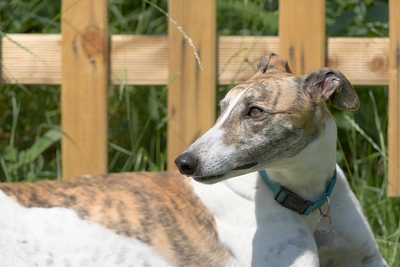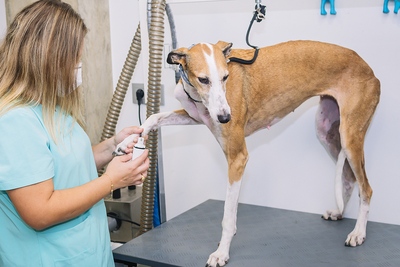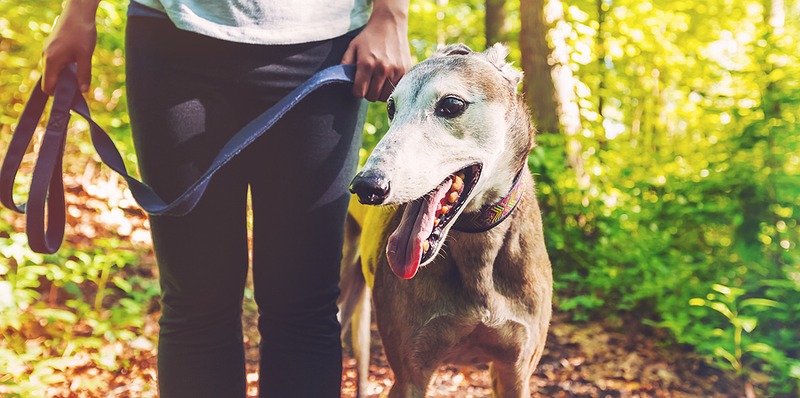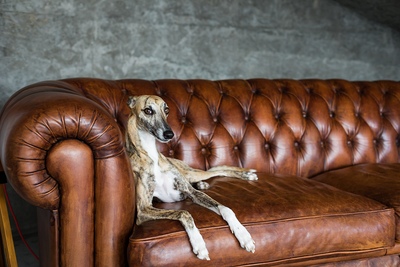 In modern times, ethical business practice is big news, and as a part of that animal welfare in sport is a bigger priority than ever. That means sports that use animals, such as horse racing and dog racing, have come under a lot of pressure over the last 30 years or so to reform their processes and structures to ensure that the animals involved are properly looked after. Whilst some campaigners object to such activities entirely, the vast majority of people in the UK believe the sports mentioned are valuable cultural assets that have a right to exist as long as the animals are treated well and there is no unnecessary suffering.
In modern times, ethical business practice is big news, and as a part of that animal welfare in sport is a bigger priority than ever. That means sports that use animals, such as horse racing and dog racing, have come under a lot of pressure over the last 30 years or so to reform their processes and structures to ensure that the animals involved are properly looked after. Whilst some campaigners object to such activities entirely, the vast majority of people in the UK believe the sports mentioned are valuable cultural assets that have a right to exist as long as the animals are treated well and there is no unnecessary suffering.
In this piece, we look specifically at greyhound welfare to see what rules, regulations and protocols are in place to guarantee that the dogs are as healthy and as happy as possible during their racing careers. There are a lot of myths about the sport and a lot of half-truths put out there by those that support banning it. However, licensed dog racing is well regulated and as well as the animals being well treated during their racing career, increasing efforts are being made to ensure they are adequately rehomed once their hare-chasing days are over.
Who Regulates UK Greyhound Racing?
 We have just said that “licensed dog racing is well regulated” but who runs the sport in the UK? The vast majority of greyhound racing here is administered by the Greyhound Board of Great Britain (GBGB). In their own words, their role is to “safeguard the integrity and future prosperity of British greyhound racing so that it remains a successful and sustainable sport with welfare at its heart.”
We have just said that “licensed dog racing is well regulated” but who runs the sport in the UK? The vast majority of greyhound racing here is administered by the Greyhound Board of Great Britain (GBGB). In their own words, their role is to “safeguard the integrity and future prosperity of British greyhound racing so that it remains a successful and sustainable sport with welfare at its heart.”
At this point we should make a distinction between licensed racing and independent, unlicensed racing. This latter activity, usually called flapping, takes place less and less these days, although at the time of writing there are still three independent flapping tracks. For some perspective on this, there used to be well over 100; you can read more about flapping here.
Such dog racing does not fall under the control of the GBGB and is largely unregulated. As such animal welfare standards tend to be lower, such as they exist at all. However, in this article we are only talking about mainstream, licensed and regulated racing, with debates over flapping left for another day.
Returning to the GBGB, as said, they are responsible for the vast majority of greyhound racing that takes place in the UK. Such is the importance of animals being well looked after they state the following:
“We oversee 21 stadia across the country and ensure each race is run fairly and cleanly. We are also responsible for regulating the welfare and care of all racing greyhounds – from registration to retirement. We are staffed by world-leading experts including vets, academics and animal welfare specialists all of whom love and care for our greyhounds, putting them centre-stage in all we do.”
Their “Welfare & Care” section details five key areas of care and responsibility that are integral to the sport:
- Commitment to care
- Investing in welfare
- Rehoming
- Research and guidance
- Injury and retirement
Data on injuries and retirements is publicly available, they work with academic researchers and undertake their own research in order to improve and refine best practice, invest time and money into general welfare procedures, and have been making increasing efforts to improve the way in which retired animals are rehomed.
Do The GBBB Live Up To Their Word?
 It is easy for an organisation to say the right words, but do the GBBB walk the walk as well as they talk the talk? It is hard to dispute that those who train and work with the greyhounds really do love their animals. However, this is a business for many and so it is no surprise that sometimes rules are bent, regulations stretched, grey areas tested and, sadly, dogs not given the respect they deserve.
It is easy for an organisation to say the right words, but do the GBBB walk the walk as well as they talk the talk? It is hard to dispute that those who train and work with the greyhounds really do love their animals. However, this is a business for many and so it is no surprise that sometimes rules are bent, regulations stretched, grey areas tested and, sadly, dogs not given the respect they deserve.
Ascertaining exactly how well the GBBB are doing (and have done in the past) is far from easy and reports of mistreatment do, of course, surface from time to time. However, there can be little doubt that huge strides have been made over the past 10 years or so and that the welfare of greyhounds is better than it ever has been in the long history of the sport.
As detailed by the Dogs Trust, “the Welfare of Racing Greyhound Regulations (2010) were brought in after huge pressure from charities, MPs, media and the public to ensure that the welfare of the dogs was better protected”. The new regulations were far from perfect but did lead to many improvements.
One of the biggest issues with the regulations was that they focused on how dogs were treated at the tracks but not in general, away from the tracks. Further recommendations and changes have since been made and, of course, those people who keep and train greyhounds for racing are also subject to the same general laws that govern all dog owners.
The Animal Welfare Act of 2006 made such laws tougher than they had previously been and so these measures, alongside the improved 2010 racing-specific regulations, go a long way towards improving the quality of life racing dogs enjoy.
Licensed kennels, where most dogs are kept, have strict requirements as to how the dogs can be kept, how they are treated and what condition the dogs are in. Regular checks ensure trainers and kennel owners abide by these rules, whilst drug and medical checks ensure the animals are free from doping and are in good health. Further checks take place at the track too and all in all these measures have to be considered as robust and thorough, though few would claim they are fool proof.
One of the Dogs Trust’s earlier criticisms of the 2010 regulations was that there was no imperative to publish injury data. As said earlier, such info is now publicly available and is independently verified. Overall injury levels are acceptably low (of course different people have different views of what is acceptable but for 2019 it was around 1%) and most injuries that are sustained are not major.
Greyhound Rehoming

Although a lot of work has been done in all areas when it comes to greyhound welfare, rehoming remains an area of concern for many critics of the sport. Things have improved but for many there are still a large number of dogs that become unwanted once their worth at the track has diminished.
On the matter, the GBGB states that “We strongly believe that every retiring greyhound that can be rehomed, should be rehomed. We want to ensure that after their racing careers, all GBGB licensed greyhounds enjoy a long and happy retirement.” The GBGB has worked hard to achieve these aims and there are a number of charities too, including:
In addition to these there are many other small charities and regional variations, such as Greyhound Rescue Wales. Some would argue that the fact there are so many charities needed shows what a big issue this is and that, moreover, a so-called sport should not necessitate multiple charities to fix a problem it creates. Whatever your view on the broader picture, the fact is that through the work of all these organisations and the GBBB, literally thousands of aging stars of the track are found happy new homes each year.
In addition to this, in 2020 the GBB launched the Greyhound Retirement Scheme (GRS). As part of this each dog (the GBGB prefer the word athlete) is assigned a bond of £400 when they are registered. This is funded by the GBGB themselves and the owners and is then held until the greyhound retires. Sorry, until the athlete retires.
 The aim of this, according to the GBGB is to “remove the financial barriers to rehoming greyhounds” and the bond helps “with costs associated with a greyhound’s retirement, such as kennelling, feeding and caring for the greyhound until a home is found.” In addition, the GRS includes an expanding data base of approved rehoming centres, making it easier than ever for dogs to be united with locally based people looking for a four-legged addition to their families.
The aim of this, according to the GBGB is to “remove the financial barriers to rehoming greyhounds” and the bond helps “with costs associated with a greyhound’s retirement, such as kennelling, feeding and caring for the greyhound until a home is found.” In addition, the GRS includes an expanding data base of approved rehoming centres, making it easier than ever for dogs to be united with locally based people looking for a four-legged addition to their families.
The GRS came into force in September 2020, with the £400 bond split evenly between the dog’s owners and the GBGB. Funds are retained by the GBGB with any interest accrued ploughed back into the scheme. There is no doubt that this is another big step in improving the overall picture of animal welfare in relation to greyhound racing.
Last of all, let us conclude with a strange piece of Covid-19 silver lining. The lockdown-powered boon in dog ownership has meant that huge numbers of greyhounds were rehomed in 2020. It has been reported that some charities and rehoming groups have even run out of greyhounds. Many reported record numbers of dogs being rehomed in 2020 with expectations for this to continue well into 2021.
